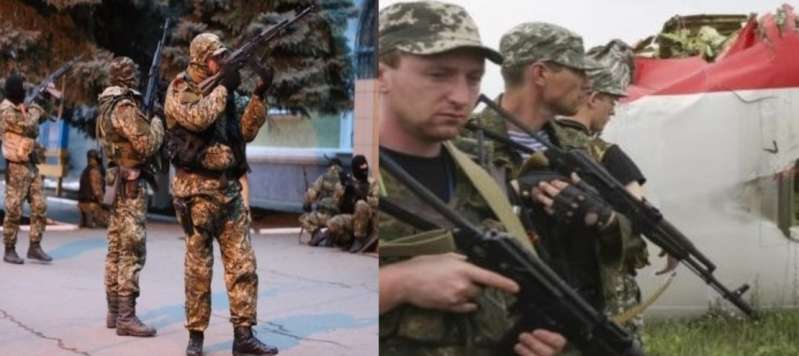Important move by ECHR merges Dutch case against Russia over MH17 with Ukraine’s case over aggression in Donbas

The European Court of Human Rights’ Grand Chamber has decided to combine Ukraine’s interstate case against the Russian Federation over its actions in eastern Ukraine with two other cases, most importantly, that brought by the Netherlands against Russia over the downing by a Russian BUK missile of Malaysian airliner MH17. This will drag out still further proceedings that are already anything but speedy, however Ukraine’s Deputy Justice Minister Ivan Lishchytsa, Is convinced that the advantages to the move outweigh this significant ‘minus’.
The new case, following the merger announced by the Grand Chamber on 30 November, will be referred to as Ukraine and the Netherlands v. Russia (under No. 43800/14, 8019/16 and 28525/2043).
There have been a number of inter-state cases initiated by Ukraine since Russia’s invasion of Crimea and military aggression in eastern Ukraine (or Donbas). The decision on 30 November 2020 does not pertain to the case against Russia over Crimea which, at least in theory, is close to a judgement.
Until the merger, Ukraine v. Russia (re Eastern Ukraine) (no. 8019/16) pertained to (what “the Ukrainian Government maintains is”) Russia’s de facto control over the illegal armed formations and so-called ‘separatists’ in parts of the Donetsk and Luhansk oblasts. The application covers what is everywhere referred to as ‘alleged’ violations of virtually all rights and freedoms enshrined in the European Convention. This includes:
civilian and military deaths as the result of force by armed groups controlled by Russia;
torture and ill-treatment of civilians and POWs by Russian-controlled armed groups;
severe curtailment of the right to freedom of expression in occupied Donbas;
Judging by the rights mentioned, there will certainly be considerable detail about violations of the right to liberty; to a fair trial and family life through the militants’ taking of civilian hostages; the preposterous ‘trials’ and huge ‘sentences’ against people for pro-Ukrainian messages in social media, etc.
Lishchytsa explains that the Ukrainian side had for some time suggested adding the separate inter-state application, lodged on 13 June 2014, to this main case. The application was over three separate occasions when children from orphanages in occupied Donbas were taken to Russia, to a large extent as propaganda stunts, and it is certainly logical that it has now been merged.
The Dutch Government announced on 10 July 2020 that it had “decided to bring Russia before the European Court of Human Rights for its role in the downing of Flight MH17”. It explained that the contents of the inter-state application would “also be incorporated into the Netherlands’ intervention in the individual applications submitted by the victims’ next of kin against Russia to the ECtHR. By taking this course of action the government is offering maximum support to these individual cases.”
Rather belatedly, Russia reacted in October, announcing that it was ending “trilateral consultations with Australia and the Netherlands” over MH17 and accusing the Netherlands of “hostile actions” in its lodging of the inter-state application against Russia.
Lishchytsa points to a major ‘plus’ from the merging of this application with Ukraine’s, He explains that there is a great deal of material in the case from the Dutch criminal proceedings over MH17 which Ukraine’s Government was earlier not given access to as confidential parts of the investigation. These can now be part of Ukraine’s case. He also believes that “the adding of a second applicant to the case strengthens its context, with the violations of human rights by Russia in the course of its invasion of sovereign Ukrainian territory having tragic impact also beyond Ukraine.
This adds to one of the minuses, namely the likelihood that the case will be dragged out still further. The Court in Strasbourg has yet to begin communicating with the Russian Government regarding the Dutch application, and Lishchytsa says that they will be asking the Court to expedite its consideration of the Dutch case so that the merger of applications which Ukraine supports does not lead to examination of claims being further delayed.
It is just possible that this merger will speed matters up. In December 2018, ECHR decided to adjourn consideration of many of the thousands of individual applications over the conflict in Donbas. It explained that “a key issue to be determined in these applications is whether Ukraine or Russia has jurisdiction in relation to the matters complained of, in accordance with Article 1 of the European Convention on Human Rights (Obligation to respect human rights). As matters now stand, the Court expects to rule on this issue in the related inter-State case of Ukraine v. Russia (re Eastern Ukraine) (application no. 8019/16), in which the Government of Ukraine raises various complaints against the Government of the Russian Federation.”
Since the evidence is overwhelming that MH17 was downed by a Russian BUK missile, with the missile launcher having come from Russia and swiftly returned there, there are surely no such issues of jurisdiction. The Dutch Government has said that it is bringing its inter-state application to support applications from the families of the victims, not to impede them and it will hopefully also be asking the Court to treat the case with urgency.





